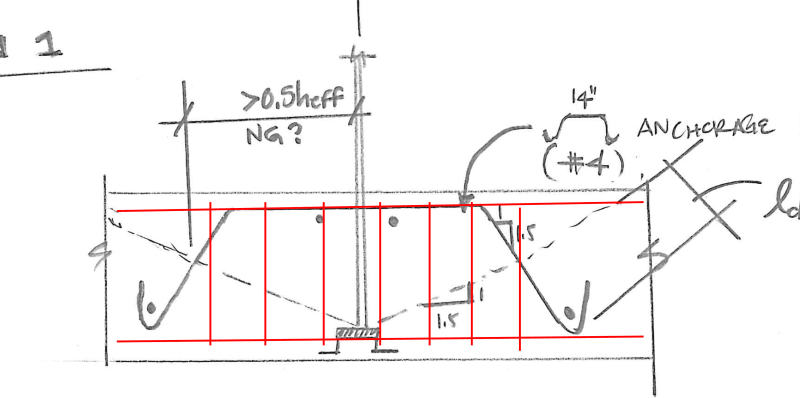Shanman_
Structural
- Oct 25, 2017
- 18
Hi All,
Would appreciate input on the attached detail sketches. We have a job going through DSA (Division of the State Architect here in CA - for schools) where a detail we routinely use for anchorage was rejected due to the distance from centerline of anchor to the intersection of the anchorage reinforcement and the theoretical breakout plane being larger than 50% of h(effective) - see ACI 17.4.2.9 commentary.
After going through examples of details from other Structural firms and even through Simpson's Shallow Anchor Technical Blog, Technical Paper (w/ associated load testing) - we are feeling pretty comfortable that either detail 1 or 2 in the attached should be sufficient.
I would like to invite any thoughts/comments/concerns with either option or for anyone to share any resources they have on what they feel the right solution is. Keep in mind the force is in the order of 60kips into a 12" PT slab-on-grade. Ignoring edge conditions, this detail usually requires two of these "mustache bars" (as I call them) each way to restrain the breakout cone. We then check punching shear on an outer critical perimeter at the extremities of the reinforcing bars to ensure no failures would occur in that plane.
Thanks!
KS
Would appreciate input on the attached detail sketches. We have a job going through DSA (Division of the State Architect here in CA - for schools) where a detail we routinely use for anchorage was rejected due to the distance from centerline of anchor to the intersection of the anchorage reinforcement and the theoretical breakout plane being larger than 50% of h(effective) - see ACI 17.4.2.9 commentary.
After going through examples of details from other Structural firms and even through Simpson's Shallow Anchor Technical Blog, Technical Paper (w/ associated load testing) - we are feeling pretty comfortable that either detail 1 or 2 in the attached should be sufficient.
I would like to invite any thoughts/comments/concerns with either option or for anyone to share any resources they have on what they feel the right solution is. Keep in mind the force is in the order of 60kips into a 12" PT slab-on-grade. Ignoring edge conditions, this detail usually requires two of these "mustache bars" (as I call them) each way to restrain the breakout cone. We then check punching shear on an outer critical perimeter at the extremities of the reinforcing bars to ensure no failures would occur in that plane.
Thanks!
KS

